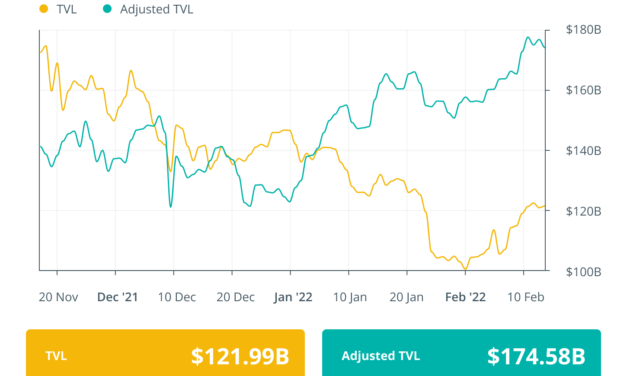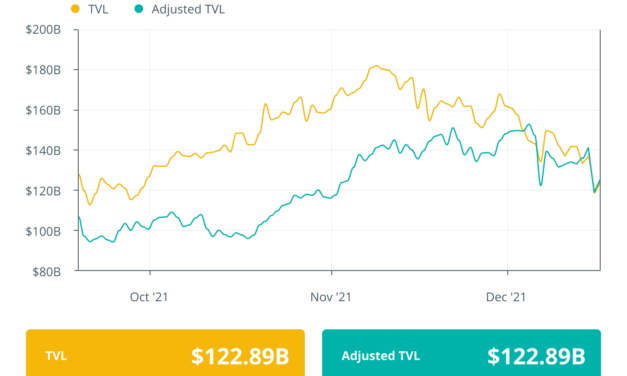Finance Redefined: Alchemy raises $200M, Bunny goes DAO, Feb. 4–11
Welcome to the latest edition of Cointelegraph’s decentralized finance newsletter.As the DeFi space continues its technical resurgence, essential news on funding, innovation and DAOs continues to drive adoption in what remains a nascent industry.For the full version of this newsletter including longer, more descriptive analysis of the top stories this week, subscribe below: Alchemy raises $200M in latest funding, ACH token soars 77%Web3 platform Alchemy announced the launch of a $200-million Series C funding round this week, giving the company a decacorn status and a valuation of $10.2 billion.The seven-investor round was led by two California-based venture firms — Lightspeed Venture Partners, which were investors in FTX’s recent tertiary funding round, and Silver Lake — with additional participation from Pantera Capital and previous lead investor in October’s $250-million raise, Andreessen Horowitz’s a16z, among others.Alchemy provides the underlying infrastructure for Web3 applications — akin to the service provided by Amazon Web Services for internet sites — and has worked with the likes of OpenSea, Adobe, Dapper Labs, “CryptoPunks” among others to support the growth of the Web3 ecosystem into the mainstream.Since October’s funding round led by a16z, Alchemy has implemented several initiatives such as an open Web3 University to foster education within the space, a startup program titled Alchemy Ventures designed to support emerging businesses, in addition to a nonfungible token (NFT) application programming interface for website developers.According to the company, NFT marketplaces built on the Alchemy platform have registered in excess of $1.5 billion in artist royalties over the past 12 months, a crucial community-orientated metric among Web3 participants.Alchemy co-founder and CEO Nikil Viswanathan shared his assessment of the last year across the industry, as well as predictions for the upcoming year, stating:“2021 was the year developers took Web3 mainstream and created businesses that are transforming the lives of millions. In 2022, we’ll be doubling down on our commitment to meeting developer needs in more places, making it easier than ever to unlock the potential of Web3.”Bunny and Qubit pivot to DAO in the wake of $80-million exploitDeFi protocol Bunny Finance announced that following a seismic $80-million bridge exploit on Qubit, the future of the project in its current form is untenable, and therefore, the team has pledged to grant governance control of the protocol over to community members in the form of a decentralized autonomous organization, or DAO.The incident, initially reported by Cointelegraph on Jan. 28, occurred when an anonymous hacker exploited a so-called “logical error” in the Qubit X-bridge, enabling them to withdraw tokens on the Binance Smart Chain (BSC) without depositing any Ether (ETH) as is traditionally required. All in all, the hacker stole 77,162 Qubit xETH (qXETH), or $185 million, from the protocol and utilized it as a collateral mechanism to borrow a number of assets within the lending pools equivalent to the value of $80 million. On-chain data analysis reveals that the hacker borrowed tokens included 15,688 Wrapped Ether (wETH) worth $37.6 million, 767 Bitcoin BEP2 (BTCB) ($28.5 million), $9.5 million worth of stablecoins and $5 million worth of PancakeSwap (CAKE), Pancake Bunny (BUNNY) and MDEX (MDX) tokens.Subsequent announcements from the team noted that the participants of the community DAO would become responsible for major protocol developments, including upgrading contracts and altering fee structure, among other things. Hashstack launches Open protocol testnet, offering under-collateralized loansDeFi platform Hashstack Finance deployed a closed testnet version of its crypto lending protocol, Open this week. Initially birthed from Harmony’s $300-million Ecosystem Fund, Hashstack’s Open protocol seeks to balance the prerequisites for collateral loan sums in typical DeFi protocols.Constructed on the Harmony blockchain, Hashstack’s Open protocol claims to enable borrowers to receive a loan with a collateral-to-loan ratio of up to 1:3, allowing the potential of borrowing up to $300 in crypto in exchange for $100 of collateral.Following this, users have the ability to withdraw 70% of the collateral, valued at $70 in this case, while utilizing $230 as in-platform trading capital. Commenting on the subject, Hashstack claimed that lending within the DeFi space is often over collateralized in that on average, a borrower provides a minimum of 42% excess collateral against the loan they intend to borrow.Vinay, founder of Hashstack Finance, explained the intricate process in more detail: “Today, if you want to borrow $100 on Compound, or Aave, or even MakerDAO, you are required to provide collateral of at least $142. This breaks the primary intent behind loan procurement and has restrictive use-cases for the borrower.”15/ @0xHashstack’s Open protocol is the world’s first autonomous lending framework enabling under-collateralized loans up to 1:3 collateral-to-debt ratio.Website: https://t.co/cLpTbRqJCm#defilending #Fintech pic.twitter.com/QLOiemEu0x— Harmony (@harmonyprotocol) December 5, 2021Token performancesAnalytical data reveals that DeFi’s total value locked increased by 11.97% across the week to a figure of $123.08 billion, successfully recovering from the market downturn in recent weeks.Secret (SCRT) gained an impressive 30.4% over the past seven days. Avalanche (AVAX) followed up last week’s 25.54% gain with a further 36.7%, while Loopring (LRC) registered a 19.5% increase. Wrapped Bitcoin (wBTC) and THORchain (RUNE) gained 14.5% and 13.2%, respectively.Interviews, features and other cool stuffThanks for reading our summary of this week’s most impactful DeFi developments. Join us again next Friday for more stories, insights and education in this dynamically advancing space.
Čítaj viac










